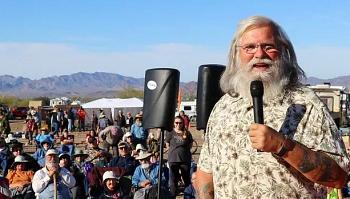Off-road, off-grid: the modern nomads wandering America's back country
If you look closely on city streets, campgrounds and stretches of desert run by the Bureau of Land Management, you’ll see more Americans living in vehicles than ever before. It was never their plan.
“I wasn’t prepared when I had to move into my SUV. The transmission was going. I had no money saved. I was really scared,” said April Craren, 52, bundled in blankets atop a cot inside her new minivan, a 2003 Toyota Sienna.
She flipped the camera on her phone to show me the camp stove she uses to make coffee and her view of the sun rising over the Colorado River. She has no toilet, shower or refrigeration.
After separating from her husband, April found herself homeless in June 2020, exacerbating the depressive disorder for which she receives $1,100 a month in disability benefits.
“I could have gotten an apartment but in a crappy unsafe place with no money to do anything at all,” she explained.
Last year, where April lived in Nixa, Missouri, the average rent for an apartment was $762, slightly less than the national average. Like nearly half of American renters, she would have been crippled by the cost.
It’s not surprising, then, that job loss, divorce or, say, the sudden onset of a global health or financial crisis can push so manyover the edge.
“If the Great Recession was a crack in the system, Covid and climate change will be the chasm,” says Bob Wells, 65, the nomad who plays himself in the film Nomadland, an early Oscar contender starring Frances McDormand. Bob helped April to adopt the nomad way of life and change her life in the process.
Today, he lives exclusively on public lands in his GMC Savana fitted with 400 watts of solar power and a 12-volt refrigerator. His life mission is to promote nomadic tribalism in a car, van or RV as a way to prevent homelessness and live more sustainably.





